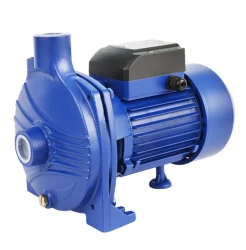Features and applications of plunger pumps
2023-11-24
Plunger pumps, also known as reciprocating positive displacement pumps, are a type of pump that uses a plunger or piston to move fluid through a cylindrical chamber. The reciprocating motion of the plunger creates pressure within the chamber, forcing the fluid to move through the pump. Plunger pumps are valued for their ability to generate high pressures and are commonly used in applications where precision and control over fluid flow are critical. Here are key features and applications of plunger pumps:
Key Features:
1. Reciprocating Plunger:
- Design: Plunger pumps use a reciprocating plunger or piston to create fluid displacement.
- Sealing: The plunger is typically sealed within a cylinder to prevent leakage and ensure efficient pumping.
2. Positive Displacement:
- Consistent Volume: Plunger pumps are positive displacement pumps, meaning they move a fixed volume of fluid with each stroke, resulting in a consistent flow rate.
3. High Pressure:
- Applications: Known for their capability to generate high pressures, plunger pumps are used in applications requiring precision and high-pressure fluid movement.
4. Check Valves:
- Functionality: Plunger pumps often incorporate check valves to control the direction of fluid flow and maintain pressure.
5. Single and Multi-Plunger Designs:
- Single Plunger: Some pumps have a single plunger, while others have multiple plungers working in parallel, allowing for higher flow rates and smoother operation.
6. Variable Stroke Length:
- Adjustability: Some plunger pumps allow for the adjustment of the stroke length, providing flexibility in controlling the volume of fluid moved per stroke.
7. Versatility:
- Fluid Compatibility: Depending on materials used in construction, plunger pumps can handle a wide range of fluids, including corrosive or abrasive substances.
8. Power Source Compatibility:
- Electric, Hydraulic, or Engine-Driven: Plunger pumps can be driven by electric motors, hydraulic systems, or internal combustion engines, providing versatility in power sources.
Applications:
1. High-Pressure Cleaning:
- Industrial Cleaning: Plunger pumps are commonly used in high-pressure cleaning systems for industrial equipment, surfaces, and vehicles.
2. Waterjet Cutting:
- Precision Cutting: In waterjet cutting machines, plunger pumps create the high-pressure water needed for precision cutting of materials.
3. Oil and Gas Industry:
- Hydraulic Fracturing: Plunger pumps are used in hydraulic fracturing processes in the oil and gas industry, delivering high-pressure fluid to fracture rock formations.
4. Car Wash Systems:
- Automated Car Washes: Plunger pumps are used in automated car wash systems to deliver pressurized water and cleaning solutions.
5. Pressure Testing:
- Industrial Quality Assurance: Plunger pumps are employed in testing equipment where high-pressure conditions need to be simulated for quality assurance purposes.
6. Chemical Processing:
- Industrial Processes: Plunger pumps are utilized in chemical processing plants where precise control of fluid flow and pressure is crucial.
7. Injection and Metering Systems:
- Chemical Injection: Plunger pumps are used in metering and injection systems, delivering precise amounts of chemicals or additives.
8. Hydraulic Systems:
- Power Transmission: Plunger pumps are integral components of hydraulic systems, providing the force needed for various mechanical operations.
Plunger pumps are valued for their reliability, precision, and ability to handle high-pressure applications across diverse industries. Their positive displacement design makes them well-suited for tasks where accurate fluid delivery and control are paramount.



